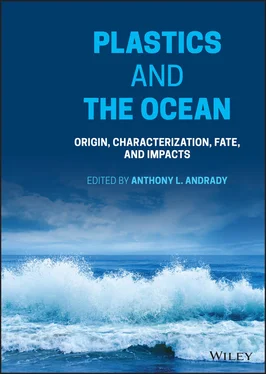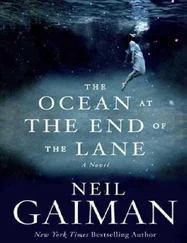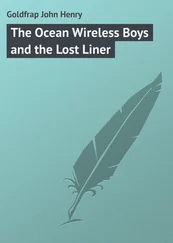Plastics and the Ocean
Здесь есть возможность читать онлайн «Plastics and the Ocean» — ознакомительный отрывок электронной книги совершенно бесплатно, а после прочтения отрывка купить полную версию. В некоторых случаях можно слушать аудио, скачать через торрент в формате fb2 и присутствует краткое содержание. Жанр: unrecognised, на английском языке. Описание произведения, (предисловие) а так же отзывы посетителей доступны на портале библиотеки ЛибКат.
- Название:Plastics and the Ocean
- Автор:
- Жанр:
- Год:неизвестен
- ISBN:нет данных
- Рейтинг книги:5 / 5. Голосов: 1
-
Избранное:Добавить в избранное
- Отзывы:
-
Ваша оценка:
- 100
- 1
- 2
- 3
- 4
- 5
Plastics and the Ocean: краткое содержание, описание и аннотация
Предлагаем к чтению аннотацию, описание, краткое содержание или предисловие (зависит от того, что написал сам автор книги «Plastics and the Ocean»). Если вы не нашли необходимую информацию о книге — напишите в комментариях, мы постараемся отыскать её.
Plastics and the Ocean
Plastics and the Ocean
Plastics and the Ocean — читать онлайн ознакомительный отрывок
Ниже представлен текст книги, разбитый по страницам. Система сохранения места последней прочитанной страницы, позволяет с удобством читать онлайн бесплатно книгу «Plastics and the Ocean», без необходимости каждый раз заново искать на чём Вы остановились. Поставьте закладку, и сможете в любой момент перейти на страницу, на которой закончили чтение.
Интервал:
Закладка:
An Already Stressed Ocean
The ocean that ends up receiving an annual increment of plastic waste from both land‐generated debris via riverine transport and also directly from coastal areas, is already under stress. The burning of fossil fuels over the past several hundred years has already increased the acidity of surface waters by 30% threatening the survival of hard‐shelled species; it’s impact on the global fishery is not reliably known. Rampant unsustainable overfishing depleting the fishery, also leaves behind enormous amounts of derelict plastic gear each year, to continue on wasteful “ghost fishing” into the next generations. Ocean also has to contend with industrial or medical wastes that introduce either pathogens or toxic chemicals into the water, creating dead zones at sea. Over‐enriching local patches of the sea by excess nutrients cause eutrophication, toxic algal blooms or fish kills. More than half the coastal and estuarine waters in the contiguous US are already affected by one or more of these phenomena to some extent.
To this already stressed ecosystem, human activity now introduces an annual load of at the very least, 8 MMT of plastic (even not counting ocean‐generated plastic debris) with no known mechanism that can remove these plastics even in the long term. All the plastic debris discharged into the ocean, except for what gets washed ashore, accumulates in the bottom sediment, but little is known about how these plastics affect the benthic ecology. Recent studies estimate the floating plastics in the ocean in 2010 at 0.5 MMT; but this is only what can be sampled by plankton nets (mesh size 300 μm) and most of the plastic debris might be smaller, below the threshold size for plankton nets. Also, net‐sampling of floating plastics excludes the majority of the plastic debris that resides in the water column or the benthos. Not surprisingly, what is counted is therefore far less than one might expect based on global plastic production.
Is it a Cause for Concern?
In common with all highly visible environmental problems with potential human health impacts, microplastics in the ocean has also been subject to media hype and exaggeration. But beyond the hyperbole, there lies a very real emerging problem that deserves the prompt attention of the research community. Exponentially growing research literature on the topic and many international professional forums addressing microplastics demonstrate some level of public commitment to the quest. Again, as with all environmental issues, some researchers do not agree that a serious problem does exist. Some point out that oceans are rich in natural micro‐and nanoparticles in any event and the impact of the small fraction of microplastics would be minimal. Others cite the much higher microplastics concentrations (compared to levels likely to be present in the ocean), used in toxicology studies that show adverse impacts, to justify their stance. However, given that plastic waste will continue to be emptied into the ocean year after year, at the rate of about a garbage truck load a minute, (that will increase to four per minute by 2050), these arguments are not particularly persuasive. In fact, these are reminiscent of the complacency in the days before the Minamata tragedy in Japan in 1950s, where organic mercury was emptied into that river (coincidentally by a plastic manufacturer) on the expectation that the water concentrations would be far too low to cause any adverse health impact. Microplastics unlike the inorganic fines in the ocean are continually fragmenting organic particles that also absorb and concentrate persistent organic pollutants (POPs) dissolved in seawater. At least in some species ingesting them, POPs bio‐accumulate and bio‐magnify along the marine trophic chain, delivering progressively higher doses of the POPs, pharmaceuticals, metals, and enzyme‐mimicking endocrine disruptor compounds to a range of marine organisms. With nanoplastics that can permeate the gut wall, these compounds can be delivered systemically. Microplastics present a threat that is very different from that of common toxicants and may well require criteria and methodologies beyond those in classical toxicology in their study. Even the toxicological data on the effects of microplastics ingestion often pertain to short‐term studies and provide limited information. Virtually nothing is known of dose‐response curves, long‐term effects, embryonic toxicity, and intergenerational effects or their potential synergy with conventional toxic compounds. Not only do they have direct effects on the ingesting organisms but also indirect effects such as changing local marine biota by introducing rafter species, especially antibiotic‐resistant bacteria developing on their surface biofilms.
How Much of a Threat do Plastics in the Ocean Pose?
MPs are ubiquitous in aquatic environments with about the same surface concentrations (from 0.01 to 1000 particles/m 3of surface water) in the ocean and rivers around the globe. Over 50 trillion MPs were estimated as merely the floating stock in the ocean in 2017. Plastics are persistent and do not mineralize in an observable timescale, especially in the ocean. The threat of microplastics in the ocean persists beyond the present generation as their levels will keep increasing in future years and their ecological effects are likely to be irreversible. Available data show bioaccumulation of microplastics in several species and biomagnification by predation, while moving along the marine food web to reach the human consumer. For instance, some bivalves as well as commercial fish species are already reported to be contaminated with microplastics. That only two to three microplastics (discernible by eye or low power microscope) are found in a sample of fish or seafood species is not reassuring, because the fish could have been ingesting that amount of microplastics routinely and potentially bioaccumulating POPs sorbed by these in its tissue.
Their growing abundance indicated by an expanding body of research findings on microplastics in the ocean raises the question of their wider impacts on the ecosystem as a whole. Has the impact of microplatics now evolved beyond that of a mere pollutant, challenging planetary sustainability to exert a systemic influence on Earth’s resilience? While they do not satisfy all criteria presently used to qualify as a planetary boundary threat, some have suggested that they would be a serious candidate phenomenon. There are, of course, many unknowns and the research that would address these gaps in knowledge needs to be undertaken without delay. The magnitude of microplastic‐related impacts at the population level and how seriously they might impact the functioning of the physical and biological cycles in the ocean, remain unclear. So is the ingestion‐related distress across the spectrum of marine organisms. Valid methodologies to allow decisions making despite these limitations need to be developed. Inadequate funding, especially in the US, to study such impacts especially at global hot‐spots for plastic pollution, holds back this important task. Of the reviews on the topic published over the last few years, less than half are by scientists in Asia, the prime hotspot for plastic pollution. Also, a great majority of the research reports tend to be qualitative and the scarcity of relevant hard numbers to gauge the impacts, impedes this assessment.
Plastics in the ocean is a serious man‐made problem that affects the present as well as future generations. A few decades from now, it may assume proportions that complicate or even defy any reasonable efforts at mitigation or containment. That the threat of plastic pollution of the ocean environment is serious and its effects irreversible are well established. Consistent with the precautionary principle, despite the scientific uncertainty of their full impact, adopting measures to curb the problem is prudent.
Читать дальшеИнтервал:
Закладка:
Похожие книги на «Plastics and the Ocean»
Представляем Вашему вниманию похожие книги на «Plastics and the Ocean» списком для выбора. Мы отобрали схожую по названию и смыслу литературу в надежде предоставить читателям больше вариантов отыскать новые, интересные, ещё непрочитанные произведения.
Обсуждение, отзывы о книге «Plastics and the Ocean» и просто собственные мнения читателей. Оставьте ваши комментарии, напишите, что Вы думаете о произведении, его смысле или главных героях. Укажите что конкретно понравилось, а что нет, и почему Вы так считаете.












